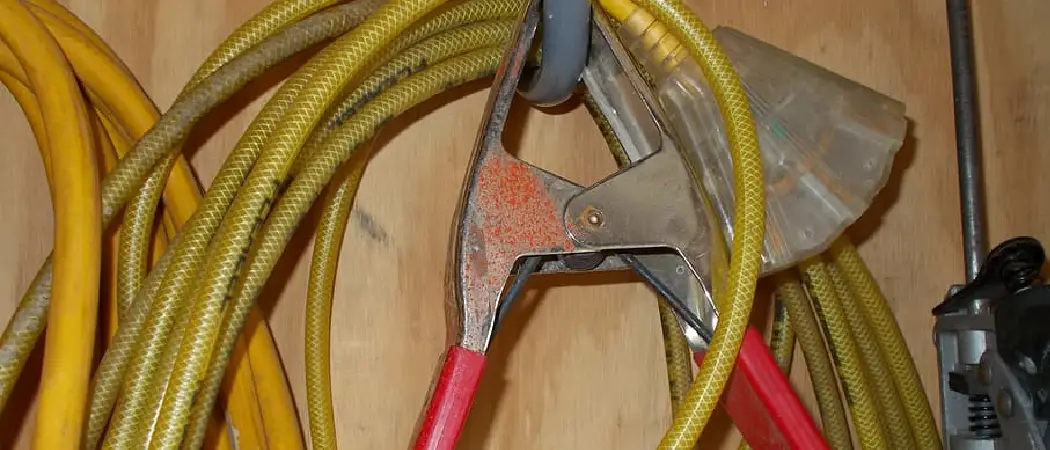If you’re looking for a way to safely and securely use extension cords outside, you’ve come to the right place! It’s important to remember that using extension cords outdoors can pose potential hazards. From tripping over loose cords to the risk of electrical fires, it’s crucial to take precautions when using them.
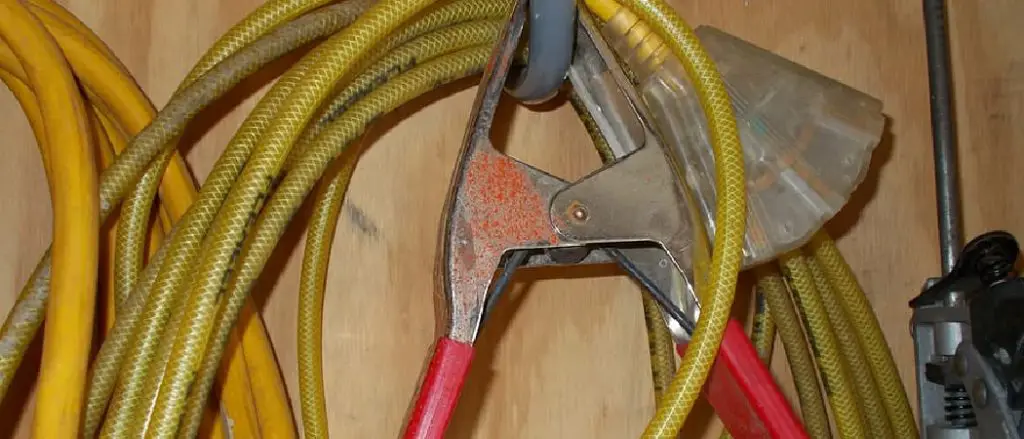
In this article, we’ll explore how to properly secure extension cords to outside walls to ensure safety for both you and your electrical devices. So, buckle up and get ready to learn how to secure extension cord to outside wall!
Why is it Important?
Safety
As mentioned earlier, using extension cords outside can be dangerous if not properly secured. Loose cords can pose a tripping hazard, especially for children and older adults. They also increase the risk of electrical fires and damage to your devices.
Compliance with Building Codes
In addition to safety concerns, securing extension cords to outside walls may also be required by local building codes. This is to ensure that the cords do not interfere with foot traffic or become damaged due to weather conditions.
Understanding the Risks
Electrical Hazards of Outdoor Extension Cords
Outdoor extension cords are not designed to withstand the same conditions as indoor cords. They can become damaged by exposure to elements such as rain, snow, and sunlight. This damage can lead to an increased risk of electrical shock or fire.
Tripping Hazards
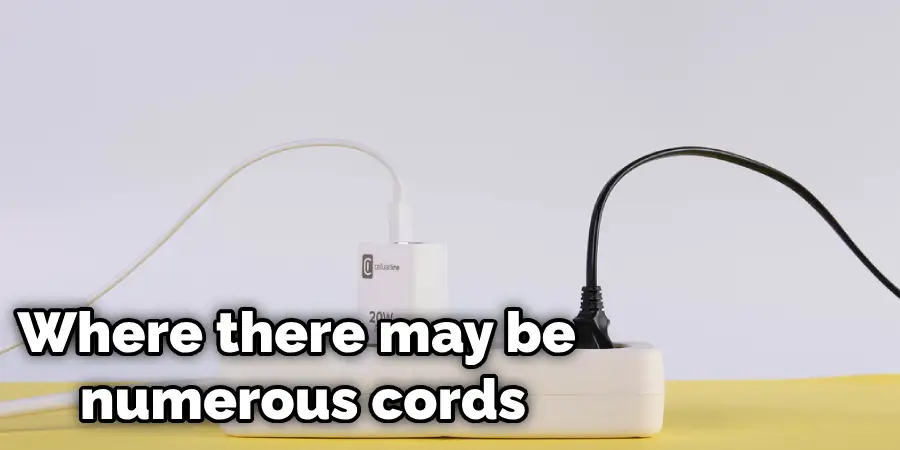
Loose extension cords can easily become tripping hazards, especially in high-traffic areas. This is a major concern for outdoor events or parties where there may be numerous cords running across the ground.
Damage to Devices
Unsecured extension cords are more susceptible to damage from weather conditions, pets, and other outdoor elements. This can result in costly repairs or replacements of your electronic devices.
How to Secure Extension Cord to Outside Wall: 10 Tips for Securing Extension Cords to Outside Walls
Follow these tips to securely and safely use extension cords outdoors:
1. Use Outdoor-Rated Extension Cords
When using extension cords outside, it’s crucial to make sure you’re using cords that are specifically designed for outdoor use. These cords are built to withstand exposure to the elements and reduce the risk of electrical hazards.
2. Keep Cords Away from Water
Water and electricity do not mix well, so it’s important to keep your extension cords away from any standing water or wet surfaces. If you need to cross a wet area, elevate the cord or use a waterproof cord cover.
3. Use Cord Covers
Cord covers are an excellent way to protect your extension cords from damage and reduce tripping hazards. They come in different sizes and materials, including rubber and plastic, and can be easily installed onto your wall or ground.
4. Route Cords Along Walls
When securing extension cords to outside walls, it’s best to route them along the wall instead of across pathways. This will help reduce tripping hazards and keep the cords out of harm’s way.
5. Avoid Pinching or Twisting Cords
Avoid pinching or twisting your extension cords, as this can damage the wires inside and increase the risk of electrical hazards. Instead, use cord clips or hooks to secure the cords in place without putting pressure on them.
6. Use Zip Ties or Velcro Straps
Zip ties and velcro straps are a great way to keep your extension cords organized and tangle-free. You can use them to bundle multiple cords together or secure them to fences, posts, or other structures.
7. Use Cord Reels
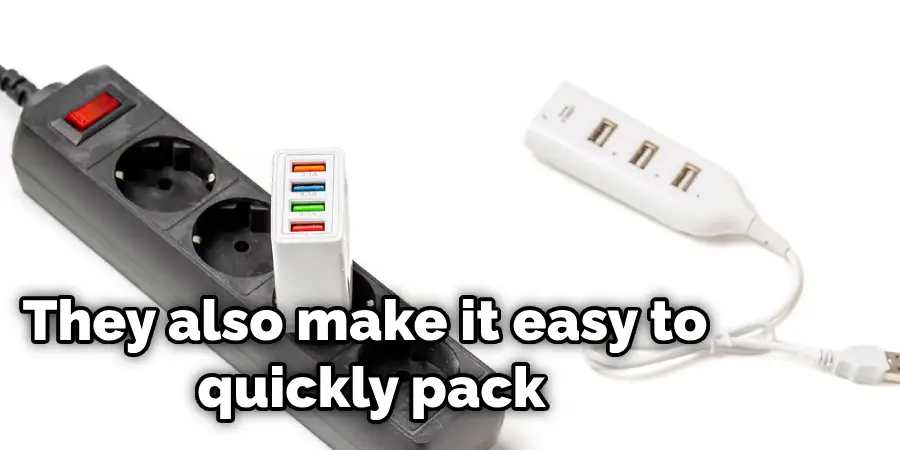
Cord reels are an excellent way to keep your extension cords neat and organized. They also make it easy to quickly pack up and store your cords when not in use.
8. Install GFCI Outlets
Ground fault circuit interrupter (GFCI) outlets can help prevent electrical shocks by automatically shutting off the power if an electrical fault occurs. If you plan on using extension cords outside frequently, it’s worth investing in GFCI outlets for added safety.
9. Inspect Cords Regularly
It’s important to regularly inspect your extension cords for any signs of damage or wear and tear. If you notice frayed wires, exposed copper, or other issues, replace the cord immediately.
10. Store Cords Properly
When not in use, make sure to properly store your extension cords by coiling them neatly and storing them in a dry, protected area. This will help prevent damage and prolong the lifespan of your cords.
By following these tips for securing an extension cord to the outside wall, you can ensure your own safety and that of others and will get a holistic idea of how to secure extension cord to outside walll. Remember to prioritize safety and always be cautious when using electrical devices outdoors. Stay safe and happy DIYing!
How to Safely Use Multiple Extension Cords Together
Use Power Strips Instead
Instead of using multiple extension cords, opt for a heavy-duty power strip with multiple outlets. This will eliminate the need for numerous cords and reduce the risk of overloading your circuits.
Respect the Wattage Limit
Each extension cord has a maximum wattage that it can handle. It’s crucial to respect this limit and avoid plugging in devices that exceed the capacity of your cord. This can lead to overheating and potential fire hazards.
Avoid Daisy-Chaining
Daisy-chaining is when you plug one extension cord into another to extend its reach. While this may seem convenient, it can overload your circuits and create a fire hazard.
Use Surge Protectors
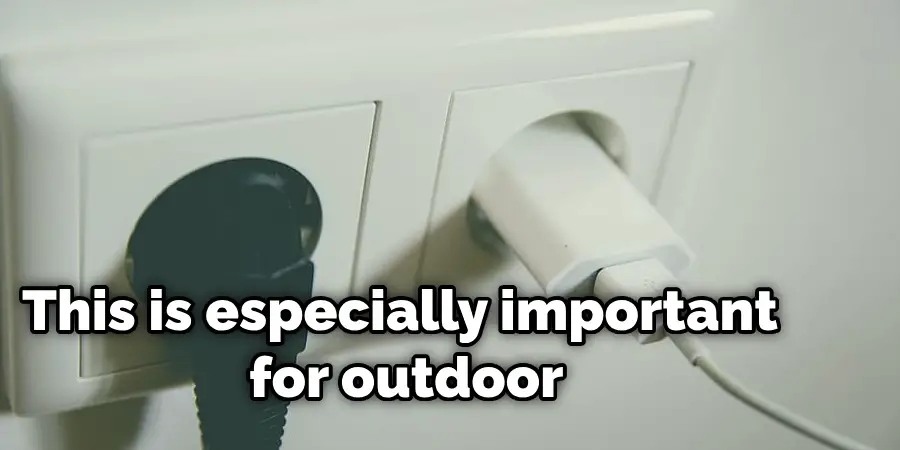
Surge protectors not only provide additional outlets, but they also protect your devices from voltage spikes that can occur during storms or power surges. This is especially important for outdoor use where the risk of electrical damage is higher.
Label Your Cords
To avoid confusion and ensure the proper usage of your extension cords, label them with their wattage limit and intended use. This will help prevent overloading and potential hazards.
Don’t Run Cords Under Rugs or Furniture
Running extension cords under rugs, furniture, or other obstructions can cause them to overheat and potentially start a fire. Always make sure your cords have proper ventilation and are not being crushed or pinched.
Replace Damaged Cords Immediately
If you notice any damage to your extension cords, do not use them. It’s important to replace damaged cords immediately to prevent electrical hazards.
Unplug Devices When Not in Use
When devices are left plugged in, they can still draw power even when turned off. This can lead to overloading and increase the risk of electrical hazards. Make a habit of unplugging devices when not in use.
Use Polarized or Three-Pronged Plugs
Polarized and three-pronged plugs are designed to reduce the risk of electrical shock. Always make sure your extension cords have these types of plugs, and never attempt to remove the grounding prong.
Consult a Professional
If you’re unsure about the proper usage of your extension cords or need help with any electrical work, it’s best to consult a professional electrician. They can provide valuable advice and ensure that all safety measures are being followed.
By following these tips, you can safely use multiple extension cords together without risking electrical hazards or overloading your circuits.
Common Mistakes to Avoid when Using Outdoor Extension Cords
Using Indoor Extension Cords Outdoors
Indoor extension cords are not designed to withstand the elements and can easily become damaged when used outside. Always make sure to use outdoor-rated extension cords for any outdoor electrical needs.
Overloading Circuits
Each circuit has a maximum load capacity, and overloading it can cause overheating and potential fire hazards. Make sure to distribute your devices among different circuits and avoid daisy-chaining.
Using Damaged Cords
Using damaged extension cords can be extremely dangerous and increase the risk of electrical hazards. Always inspect your cords before use and replace them if you notice any damage or wear and tear.
Neglecting to Unplug Devices When Not in Use
Leaving devices plugged in when not in use can lead to overloading and increase the risk of electrical hazards. Get into the habit of unplugging devices when not in use.
Using Cords with Exposed Wires or Frayed Insulation
Exposed wires or frayed insulation can cause electrical shocks and potential fire hazards. Never use extension cords with these types of damage, and replace them immediately.
Running Cords Through Doors or Windows
Running extension cords through doors or windows can cause them to pinch or cut the cord, creating a potential fire hazard. Instead, use a weatherproof cover to protect your cords when running them through openings.
Not Using GFCI Outlets for Outdoor Use
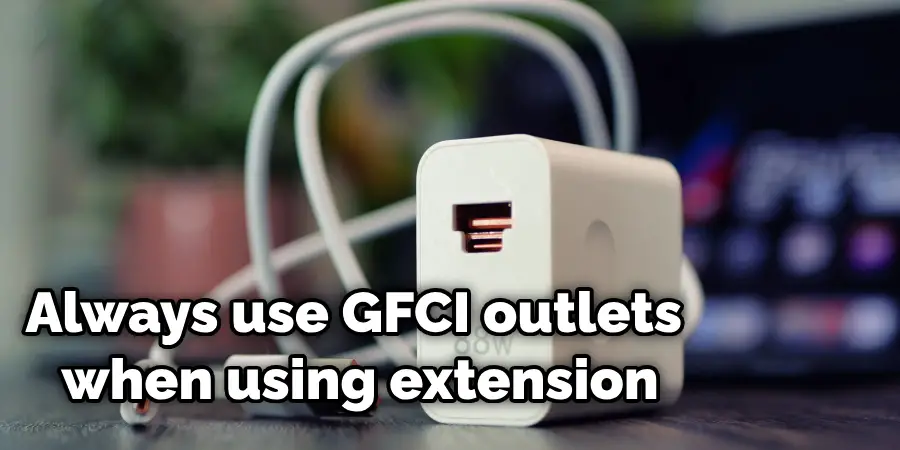
Ground Fault Circuit Interrupter (GFCI) outlets are crucial for outdoor electrical use as they can prevent electrical shock in wet conditions. Always use GFCI outlets when using extension cords outdoors.
Using Multiple Extension Cords Instead of One Longer Cord
Using multiple extension cords instead of one longer cord increases the risk of overloading and creates a tripping hazard. Use one long cord instead of daisy-chaining multiple cords.
Keeping Cords Coiled When in Use
Coiled extension cords can overheat and create potential fire hazards. Always fully extend your cords when in use to allow for proper ventilation.
Ignoring Warning Labels or Wattage Limits
Warning labels and wattage limits on extension cords are there for a reason. Ignoring them can lead to overloading and increase the risk of electrical hazards. Always read and follow all instructions when using extension cords.
By avoiding these common mistakes, you can ensure the safe and proper use of your outdoor extension cords. Always prioritize safety when working with electricity, and consult a professional if needed.
The Importance of Properly Grounding Your Extension Cords Outdoors
When using extension cords outdoors, it’s crucial to ensure that they are properly grounded. Grounding is the process of connecting an electrical circuit or device to the ground in order to prevent electrical shock and reduce the risk of fires.
Why Is Proper Grounding Important?
Proper grounding provides a path for excess electricity to flow into the ground instead of through equipment or people. This helps prevent electrical shocks and protects against overloading circuits, which can lead to fires.
In outdoor settings, grounding is especially important due to the increased risk of wet conditions and other potential hazards. Extension cords that are not properly grounded can cause electrical shock or even start a fire if exposed wires come into contact with water or other conductive materials.
How Can You Properly Ground Your Extension Cords?
When using extension cords outdoors, make sure to use three-pronged or polarized plugs and outlets that are grounded. These types of plugs have an extra prong that is specifically designed for grounding.
Additionally, you can use a ground fault circuit interrupter (GFCI) outlet or adapter for added protection. GFCI outlets are designed to shut off the power supply if they detect a change in electrical current, preventing electrical shock.
It’s also important to ensure that your extension cords are not damaged or have frayed insulation, as this can compromise their grounding capabilities. Always inspect your cords before use and replace them if needed.
Consult a Professional
If you’re unsure about how to properly ground your extension cords or have any concerns about electrical safety, it’s best to consult a professional electrician. They can provide expert advice and ensure that all safety measures are being followed. Don’t take any risks when working with electricity; always prioritize safety first.
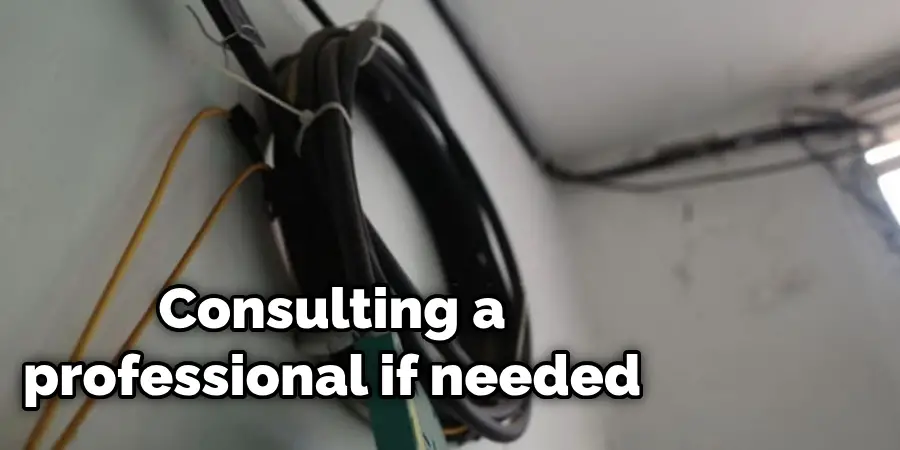
In conclusion, proper grounding is crucial for the safe outdoor use of extension cords. By following these tips and consulting a professional if needed, you can safely use multiple extension cords together without risking electrical hazards or overloading your circuits.
Long-Term Maintenance Tips for Keeping Outdoor Extension Cord Outlets in Good Condition
Regularly Inspect and Clean Outlets
It’s important to regularly inspect your outdoor extension cord outlets for any damage, wear and tear, or debris build-up. This will help prevent potential hazards and ensure that your outlets are in good working condition.
Protect Outlets from the Elements
Outdoor outlets are constantly exposed to the elements, which can cause damage over time. Consider installing weatherproof covers to protect your outlets from rain, snow, and other outdoor conditions.
Use Properly Rated Outlets
Make sure that the outlets you use for your extension cords are properly rated for outdoor use. Using indoor-rated outlets can increase the risk of electrical hazards and may not be able to withstand harsh outdoor conditions.
Avoid Overloading Outlets
Just like using multiple extension cords together, overloading outlets by plugging in too many devices can lead to electrical hazards and fires. Make sure to use only the necessary amount of devices and never exceed the maximum wattage limit for your outlet.
Replace Outlets When Needed
If you notice any signs of damage or wear on your outdoor extension cord outlets, it’s important to replace them as soon as possible. This will ensure that you continue to have a safe and reliable power source for your outdoor activities.
Conclusion
In summary, outdoor extension cords provide a convenient way to power devices and equipment in outdoor settings. However, it’s important to use them properly and follow safety guidelines to prevent electrical hazards and ensure their longevity. Always prioritize safety when working with electricity, and consult a professional if needed.
By taking proper precautions and following these tips for maintaining your outlets, you can safely use extension cords outdoors for years to come. So, always be cautious and take necessary safety measures while handling extension cords for a hassle-free outdoor experience. Remember, safety comes first! Stay safe and happy using your outdoor extension cords! Happy adventuring, and thanks for reading this article about how to secure extension cord to outside wall.

